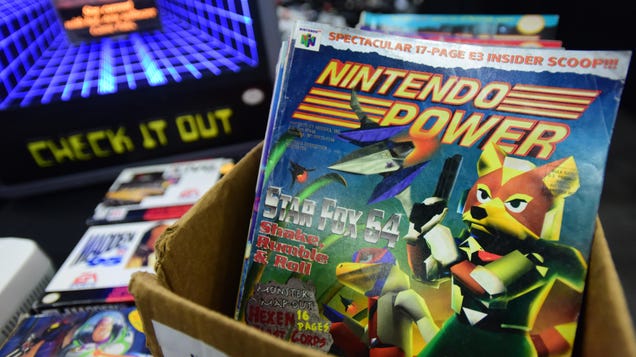From fixing up old defunct Sega Saturns to dropping hundreds of dollars on eBay for rare titles like GameCube’s Eternal Darkness: Sanity’s Requiem, retro game enthusiasts already know the struggle of enjoying early games. For video game historians, the situation is even worse. There are several nationally recognized and lauded services for watching thousands of classic films, but a new study shows that for the vast majority of gaming history from the 1970s onward, nine in 10 games remain unavailable for customers, and by extension, the growing sector of video game archivists.
A report from the Video Game History Foundation working alongside the Software Preservation Network claims that the vast majority of games from the 1970s going all the way up until 2009 are largely kept out of players’ and historians’ hands. Only 13% of games released in the U.S. before the age of vast digital distribution is legally and commercially available. The other 87% are only playable through some museums or through industry-derided piracy. Otherwise, you would need to spend inordinate amounts of time and money to collect old software and hardware to experience relics of gaming’s past.
In a phone interview with Gizmodo, Phil Salvador—the library director at the VGHF—compared the situation to film where there is much more buy-in from the movie industry at large for preservation. “Imagine if you could only get Titanic on VHS, and even then you can only see it behind a glass case.”
In the group’s survey, they looked at 4,000 historical video games released prior to 2010 and researched whether they remain available through legitimate rights holders. This included games from abandoned platforms like the Commodore 64 and more from still widely-available consoles like the PlayStation 2. Even though that latter system was one of the most popular game consoles of all time, with a long lifespan that lasted even past the PlayStation 3’s release, only 12% of its games remain available. There was no five-year period before 2010 where availability rose above 20%. For games released before 1985, only 3% are now accessible.
Salvador said that researchers were surprised that even some of the most popular games remain unavailable. Sure, few are really itching for the Ratatouille tie-in game on GameBoy, but there’s no way to play even massively successful games like Metal Gear Solid 4: Guns of the Patriots outside owning the title on a defunct PS3 or emulating it on PC. As mentioned in the company’s blog post, the closest availability comparison to other historical media artifacts would be a century old, such as pre-WWII audio at 10% and silent films at 14%.
“It goes to show, even with all the interest in some of these older titles, you’re not going to cross the barrier of 30% or more,” Salvador said.
There are currently centers of video game history, like the Strong Museum of Play in Rochester, New York, but the problem is access. A researcher shouldn’t have to fly hundreds or even thousands of miles then saddle up for what could be 10, 20, or even 50 hours of play for the sake of understanding gaming’s past. Occasionally, game publishers will creak open the window to allow more users to play a piece of video game history before closing it shut. It’s created a cottage industry of small companies and individuals who make aftermarket or modded consoles capable of playing early software.
Some companies like Digital Eclipse have created modern, commercial grade emulations of classic games, but some companies remain very protective of their content. Nintendo is perhaps the most IP-sensitive of any major company, and ever since the company closed off access to its eShop in March players and archivists have been unable to access a huge chunk of the company’s early catalog.
Rights Issues Keeps Older Games Out of Historians’ Hands
The nonprofit VGHF founded by renowned game historian Frank Cifaldi aiming to preserve and disseminate history of the medium. The organization has complained that current ruling on copyright law, especially surrounding the Digital Millennium Copyright Act, has meant some companies hoard their intellectual property despite calls to make them available for archival purposes.
The nonprofit pointed to the Entertainment Software Association as the main lobbying group arguing to the U.S. Copyright Office the industry does enough to give access to old titles. The ESA trade group has claimed that the companies under its banner—which includes the likes of Nintendo, Sony, Electronic Arts, and Activision Blizzard—already provide enough of its content commercially. The group cited some game console replicas like Sony’s maligned PlayStation Classic that came with just 20 games in-box.
In a statement sent to Gizmodo, an ESA spokesperson said “The video game industry’s creative and economic vitality depend on strong copyright protections. ESA and its member companies are committed to, and actively support, professional efforts to preserve video games and do so in ways that do not jeopardize future economic opportunity for their creative works.”
Salvador said the situation isn’t necessarily adversarial, but that there simply hasn’t been enough data to show how big the problem is for the folks trying to make sure gaming history is preserved and academically accessible. Some games also have extremely complicated rights situations, which keeps publishers from giving them a full release. Archivists are very wary about being on the wrong side of an IP lawsuit, so they’re unlikely to ask for forgiveness rather than permission.
“In a lot of cases, there’s some rates confusion, there’s licenses tied up with someone, or it’s dependent on some specific console, BIOS, or some underlying code they don’t have access to,” Salvador said. “It’s not so much about shaming the industry for not keeping games in print. For them, it’s just not worth it economically… We just need something more sustainable.”
